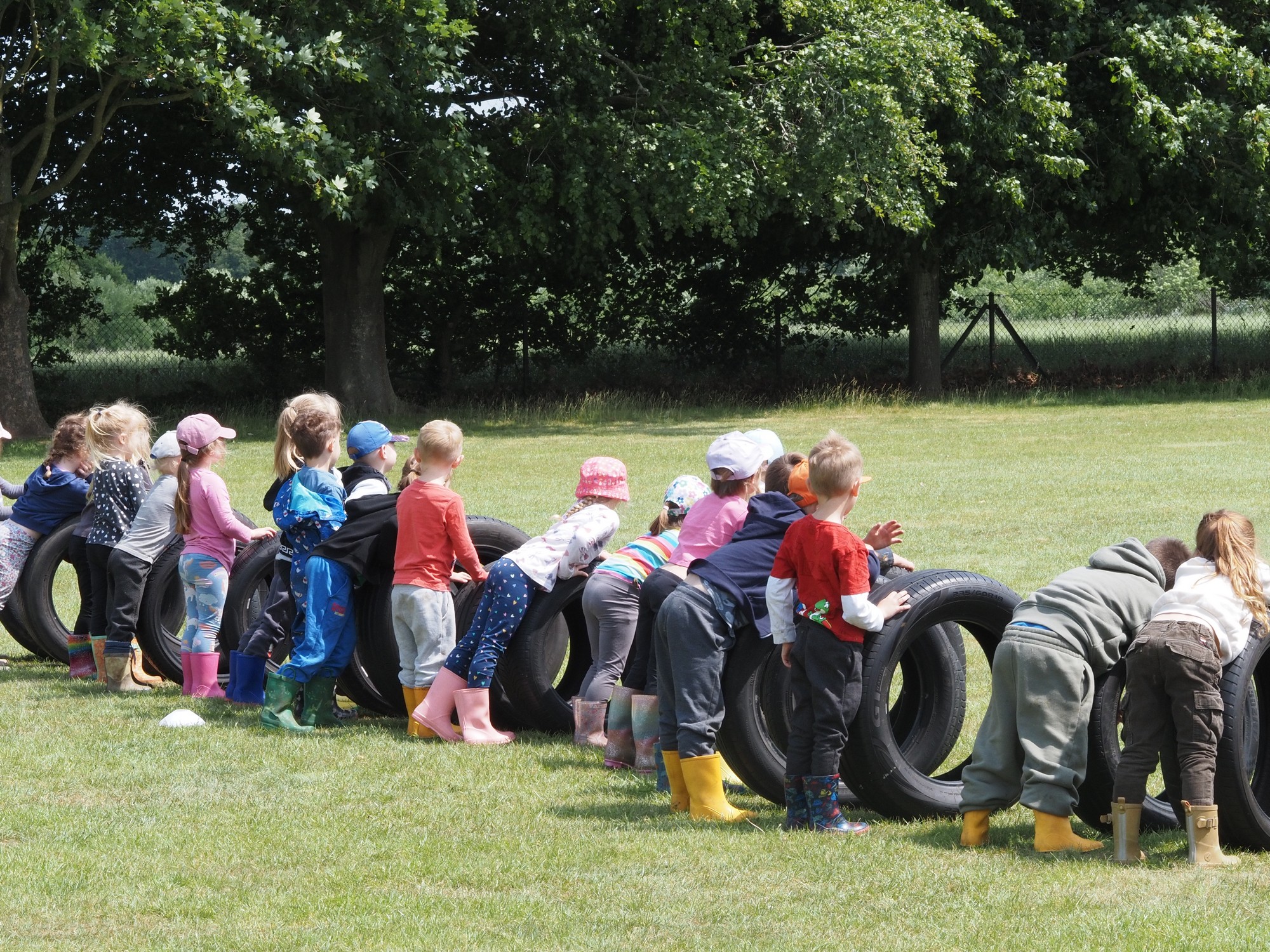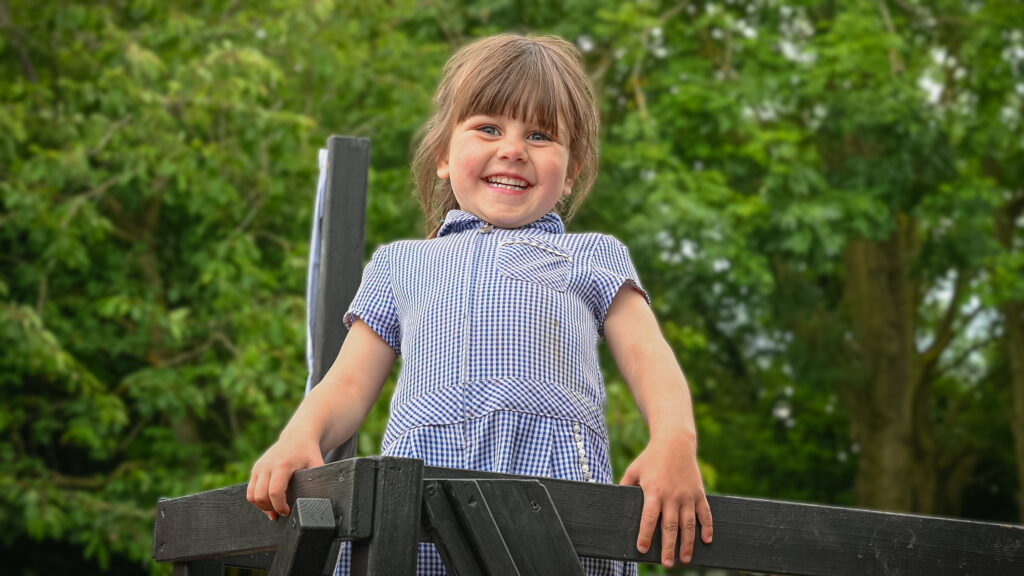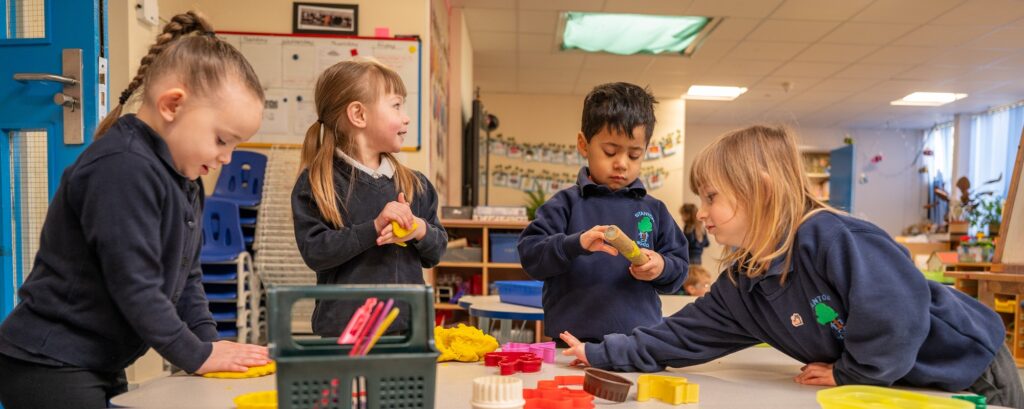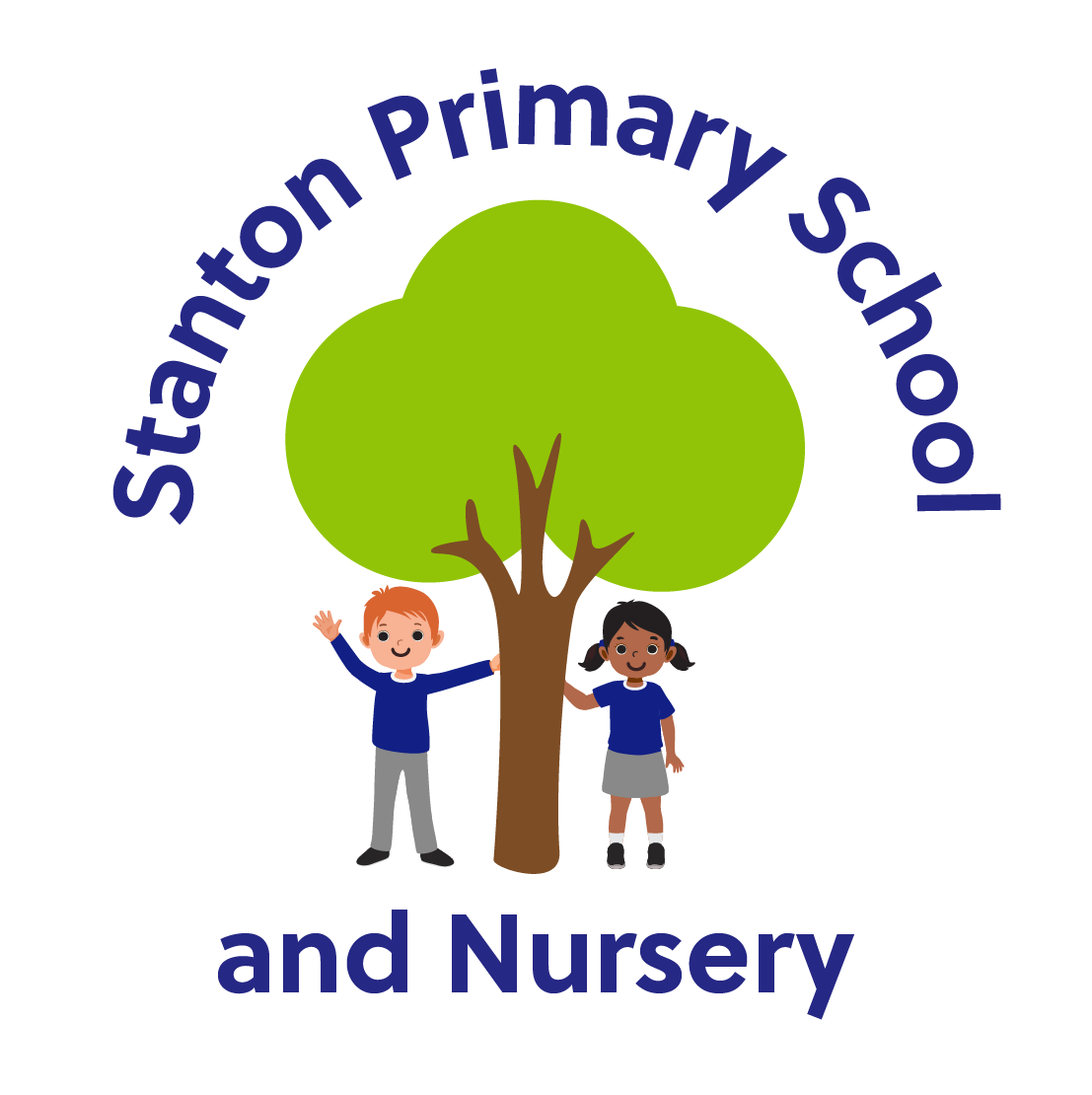
Hazel Class
Our Class Teacher is Mrs Edney. She is really passionate about Early Maths, loves all sorts of Music and spending time with her friends, family and pets. She loves to sing and play the piano too, much to the embarrassment of her teenaged son!
Miss Wells enjoys reading, crafting and adventures with her family.
Mrs Neal loves Halloween, singing, coffee, travel and spending time with her family.
PE and our visit to the wonderful school Library is every Friday afternoon.
Please take a look at our Early Years Brochure by clicking the link
Intent, Implementation and Impact
Our Curriculum
Autumn Term
In the first half term we focus on settling in, making friends, getting to know our environment and learning to play safely whilst looking after ourselves and our classroom.
In our second half term our Topic is Celebrations and learn about celebrations in different parts of the world.
Spring Term
In the first Spring half term we learn about Polar animals and consider animal life cycles.
In the second half of the Spring Term we learn about different animal habitats and explore our surroundings to discover which creatures inhabit our school grounds!
Summer Term
At the start of the summer term we learn about Sharks and other sea creatures and encourage children to consider what impact people have on sea life.
In our final half term we read lots of Pirate tales and consider what “treasure” is. We consider how found items can help us learn about the past – for example fossils and dinosaur bones!


Phonics in Hazel Class
At Stanton Community Primary School we believe that all our children can become fluent readers and writers. Therefore, we have chosen to teach reading through Little Wandle Letters and Sounds Revised, which is a systematic and synthetic phonics programme. We start teaching phonics in Nursery/Reception and follow the Little Wandle Letters and Sounds Revised Progression, which ensures children build on their growing knowledge of the alphabetic code, mastering phonics to read and spell as they move through school.
We aim for all our children to be able to tackle any unfamiliar words as they read. We also model the application of the alphabetic code through phonics in shared reading and writing, both inside and outside of the phonics lesson and across the curriculum. We have a strong focus on language development for our children because we know that speaking and listening are crucial skills for reading and writing in all subjects.
Daily phonics lessons in Reception
- We start with daily 10-minute lessons, with additional daily oral blending games, and build up to a longer lesson as quickly as possible. Each Friday, we review the week’s teaching to help children become fluent readers.
- Children make a strong start in Reception: teaching begins in Week 2 of the Autumn term.
- We follow the Little Wandle Letters and Sounds Revised expectations of progress:
- Children in Reception are taught to read and spell words using Phase 2 and 3 sounds and graphemes, and words with adjacent consonants (Phase 4) with fluency and accuracy.
Daily Keep-up lessons ensure every child learns to read
- Any child who needs additional practice has daily Keep-up support, taught by a fully trained adult. Keep-up lessons match the structure of class teaching, and use the same procedures, resources and mantras, but in smaller steps with more repetition, to help every child secure their learning.
Teaching reading: Reading practice sessions three times a week
- We teach children to read through reading practice sessions three times a week.
- These are taught by a fully trained adult to small groups of approximately six children.
- We use books matched to the children’s secure phonic knowledge using the Little Wandle Letters and Sounds Revised assessments and book matching grids.
- Sessions are monitored by the class teacher, who rotates and works with each group on a regular basis.
- Each reading practice session has a clear focus, so that the demands of the session do not overload the children’s working memory.
- The reading practice sessions have been designed to focus on three key reading skills:
- decoding
- prosody: teaching children to read with understanding and expression
- comprehension: teaching children to understand the text.
- In Reception these sessions start in Week 4. Children who are not yet decoding focus initially on wordless books and will have daily additional blending practice in small groups, so that they quickly learn to blend and can begin to read decodable books.
Phonics at home and reading
- All children have their own Phonics workbook, which they can share with their families. Each taught sound is included, along with hints on articulation, a formation phrase and a picture. We encourage families to help their child think of words starting with or containing newly learned sounds and share different ways of practising and learning the formation of each grapheme.
- Families are provided with a log in to access their child’s reading book to ensure success is shared with the family.
- Library books also go home for parents to share and read with/to children.
- We use the Little Wandle parents’ resources to engage our families and share information about phonics, the benefits of sharing books, how children learn to blend and other aspects of our provision, both online and through workshops.
Maths in Hazel Class
We teach for Mastery in Maths and allow our pupils to gain a deep understanding in order to make continual progress and move onto more complex concepts. Maths is a subject that everyone can and should be able to perform confidently and competently. We choose to teach by breaking down Maths objectives into the smallest steps, so that every pupil is secure in every new concept before moving on.
Representing Numbers
We want to develop children’s number sense so that they understand the number rather than just recognising the numeral. Children need to understand that numbers can be represented in many ways, not just as a written numeral.
We use many different objects and pictures to show that numbers can be represented in lots of ways. Children sometimes need lots of practice to recognise numbers in different forms. We play matching games and encourage children to recognise and make different amounts in our indoor and outdoor areas.
Counting
When counting, children need to understand the following:
- That we need to say one number for each object counted (touch counting).
- The final number we say is how many altogether. Some children continue to count after they have reached the final object as they don’t connect the numbers they are saying to the objects in front of them.
- That we can count objects in any order and the total stays the same.
- That the total stays the same even when the objects move. When children first start to use numbers, they often do not understand that if we move objects into another arrangement the total stays the same. We practice this with many different types of objects before moving onto more abstract ways of recording.
Recognising amounts
Another skill that is very important is recognising small amounts without the need to count them. This is sometimes called subitising.
Initially this should be by using real objects but as children progress, allowing them to see groups of dots in different arrangements helps them to mentally ‘see’ how many objects are there without needing to count. This is a very important skill when children begin to add and subtract. Using dice is a good way to practise this skill before moving onto objects in different arrangements.
Composition
When a child understands the composition of number, they understand that numbers are made up of other numbers. They ‘see the numbers inside’ other numbers: first, that all numbers are made up of ones, and then that they can be made up of pairs of bigger numbers.
So for example, 5 is made of ‘five ones’, or of ‘1 and 4’, or of ‘2 and 3’.
The CBeebies’ Numberblocks characters demonstrate this with their ability to split into other characters as shown in this clip:
The concept of composition allows children to build fluency with number bonds – not only number bonds of 10, but all the number bonds within numbers.
Reasoning
Reasoning helps children explain their thinking, which enables them to more deeply understand how they do maths. It helps them consider how to solve a problem, explain how they solved it and to think about what they could do differently. Some examples of reasoning are:
- True and false statements, for example: adding to a number always makes it smaller – true or false?
- Spotting Maths errors, for example: 1, 2, 3, 4, 6, 5, 7, 8, 9, 10
- Explaining how we know something or how we worked it out
Problem Solving
Problem Solving allows children to use their maths skills in a range of contexts and in situations that are new to them. It allows them to seek solutions, spot patterns and think about the best way to do things rather than blindly following maths procedures that they have been taught.
In Hazel Class problem solving might include:
- Identifying, following and creating patterns
- Estimating amounts of objects
- Predicting how many times they can do something in a minute
- Sharing objects between different groups – particularly when the amount of groups change and the amount of objects stays the same
- Finding different ways to partition numbers, for example 4 can be made up of 3 + 1, 2 + 2, 4 + 0 or 1 + 3.
Early Learning Goals for Maths
There are two Early Learning Goals for maths. This is what children in Reception are expected to be able to do by the end of their first year at school.
ELG: Number
Children at the expected level of development will:
- Have a deep understanding of number to 10, including the composition of each number
- Subitise (recognise quantities without counting) up to 5
- Automatically recall (without reference to rhymes, counting or other aids) number bonds up to 5 (including subtraction facts) and some number bonds to 10, including double facts.
ELG: Numerical Patterns
Children at the expected level of development will:
- Verbally count beyond 20 (not simply reciting), recognising the pattern of the counting system
- Compare quantities up to 10 in different contexts, recognising when one quantity is greater than, less than or the same as the other quantity
- Explore and represent patterns within numbers up to 10, including evens and odds, double facts and how quantities can be distributed equally
What can I do at home to help my child with Maths?
- Count – steps up the stairs, money into a money box, remembering to say one number name for each object.
- Play games using dice/dominoes and encourage child to say how many spots without counting.
- Ask children to set the table with enough knives, forks and plates for 3,4 or 5 people.
- Spot numbers in the environment – on phones, microwaves, clocks, registration plates.
- Ask children to think of their own representations for numbers eg one of them, two hands, three bears, four wheels on a car, five toes, six sides on a dice, seven dwarves, eight legs on an octopus etc
- Watch Numberblocks on Cbeebies and download the app. This programme is written by Primary Maths specialists to model maths concepts and represents number brilliantly and in a child friendly way.
- Play outdoor maths games like hopscotch and let children make up their own games and decide how to score points.
- Read books with maths concepts eg The Very Hungry Caterpillar, One is a snail, ten is a crab, What’s the time, Mr Wolf?
- Sing number songs together, such as 1,2,3,4,5 Once I caught a fish alive or 5 Little Speckled frogs and ask children to show the different numbers on their fingers – when they can do this without counting you know they are making progress!
